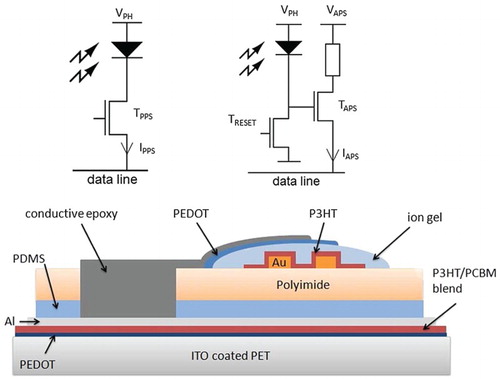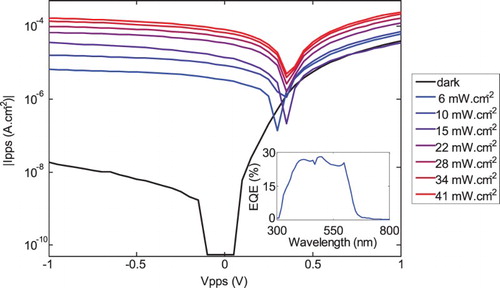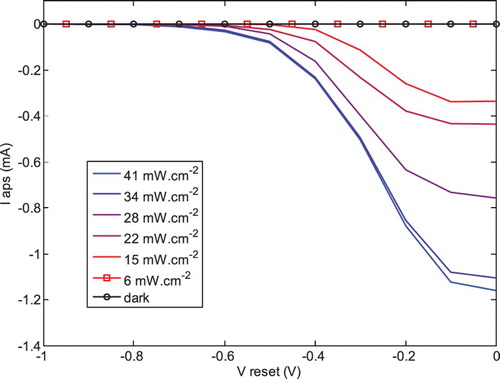Figures & data
Figure 1. (a) PPS pixel and (b) two transistors APS layouts and (c) schematic illustration of the all-organic transistor and photosensor combination in APS architecture (only Taps is depicted).

Figure 2. IV characteristics of bulk heterojunction photosensors for different illuminations (EQE in inset).



